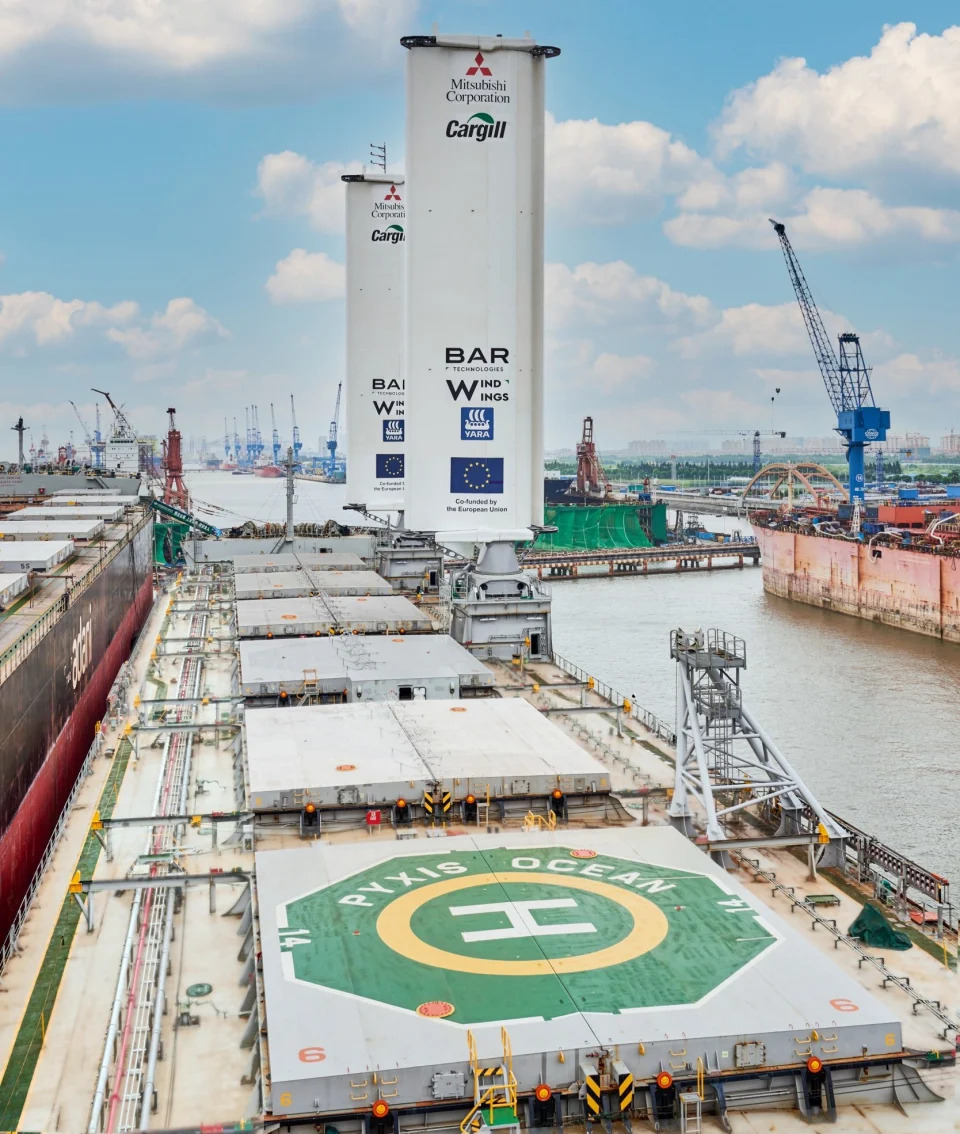Sarah Knapton
Mon, 21 August 2023

Pyxis Ocean left Singapore en route to Paranagua in Brazil in first major test to see if technology will work on a real voyage
It may not have the romance of the billowing multi-masted clippers, but the world’s first wind-powered freighter has embarked on her maiden voyage.
Mitsubishi’s Pyxis Ocean bulk carrier has been fitted with giant “wings” ushering in a new era of cargo-ladened sailing boats, borne to their destination on favourable tradewinds.
Although the sails are designed to work alongside the engine, engineers were delighted to find that during initial sea trials, the bulk carrier began to sail on wind power alone – reaching more than five and a half knots, before the crew intervened to bring her back under engine control.
Last week Pyxis Ocean – chartered by Cargill – left Singapore en route to the port of Paranagua in Brazil in the first major test to see if the technology will work on a real voyage.
If successful hundreds more ships will be retrofitted with the wings.
The revolutionary fibreglass aerofoils – which loom 123ft above deck – have been designed by engineers at BAR Technologies, a spin-off of Ben Ainslie Racing, the British team formed by the Olympic gold medalist.
Digital projections show they should deliver enough propulsion to cut the ship’s fuel use by at least three tonnes per day – about 30 per cent – helping to decarbonize the shipping industry without having to scrap existing vessels.

WindWings being retrofitted on Pyxis Ocean at the COSCO shipyard in Shanghai, China.
“I’m super excited about this,” said Jan Dieleman, president of Cargill’s Ocean transportation business. “We’re finally at the point where this ship is going to be on the water.
“We need to find out if everything is going to function. Is it safe? Is it going to work? Are the wings able to move as they should, can they fold? Does this actually work in port and then are we actually getting the fuel savings?
“It’s a huge project. This has never been done before. But you have to be willing to take some risks otherwise everything continues to be a theoretical exercise, so it’s time to showcase what is possible.”
The technology could change current shipping routes, making it more profitable to follow the old trading routes with favourable winds, rather than travelling in the straight lines most cargo ships do today.
Mr Dielman added: “We’ve always been working on the assumption that going from A to B is the quickest way, but we might need to deviate because there is more wind in certain areas, or you might get better returns at different times of year.
“We need to think differently to what we’ve done traditionally.”
Getting to the first voyage has not been easy. Cargill initially trialled kites but found they simply did not work and subsequently joined forces with Portsmouth-based BAR Technologies for the WindWings project.
That too has not been plain sailing.
Hampered visibility from the bridge
Placing the huge cambered aerofoils on the deck hampered visibility from the bridge, forcing the team to install cameras to see ahead. They also needed to build in a tilting mechanism that enabled the sails to be stowed during dockside operations, when passing under structures, or in stormy sea conditions.
In yachting, the size of the sail can be made smaller to cope with heavy weather, so engineers had to come up with a similar way of depowering the wings in case of a sudden storm.
As well as being able to pivot, each wing has three moveable elements that can be adjusted to spill the wind or exploit its power, in the same way that an aircraft wing changes its shape during take-off and landing.
Wind sensors on board pick up wind angle and speed, automatically reorienting the sail in the event of unexpected gusts. Above 40 knots – gale force conditions – the wings can be folded onto the deck.
There are also sensors which detect the lean – or heel – of the ship, how far it is drifting off the set course and the rudder angle.
“We don’t have Ben on board, so it has to be automatic,” said John Cooper, the CEO of BAR Technologies.
“If we see excess rudder angle, or leeway or heel, then the wings start, taking them out of a camber shape and pushing them into the wind angle.”
‘Sail away without the engine on’
So far, early sea trials have surpassed all expectations.
Mr Cooper added: “My senior engineer, who is normally very serious, phoned me up on the sea trials giggling like a 10-year-old and actually explaining they had just free-sailed.
“We’re all about wind-assisted propulsion, but it was super cool to lift the anchor and sail away without the engine on.
“And that’s only with two sails, we’ve got one right behind it with four sails on. They are still calculating it but we were well over five and half knots before we decided to stop acceleration, that was not terminal velocity, and we had an 18 knot wind not the strongest, so we know we can free-sail pretty damn well.”
The whole project was tested on a “digital twin” inside a computer before the wings were built by Yara Marine Technologies.
If the Pyxis Ocean’s journey is a success the team plan to test the wings on a Newcastlemax bulk carrier – one of the world’s largest cargo ships which is used to transport coal, iron ore, and grain across the world’s oceans.
No comments:
Post a Comment